The chance to create her own beer was an exciting prospect for senior drinks reporter Sonya Hook, but a day at Young’s Brewery made her wish she’d spent a few more sessions in the gym first
Creating my own beer from scratch was an exciting prospect until it dawned on me that it would entail getting up at 5am. But trudge through Wandsworth to the gates of Young’s Brewery I did, just in time to be whisked off by brewer Derek Prentice for the 6am start to the day.
We wended our way through a maze of corridors to the mashing room, where straight away I had to begin adjusting taps to start the conversion and separation process.
It was immediately clear to me that this early stage required the eye of experience rather than instruction, as Derek (seemingly at random) advised me to alternate between adding hot and then cold ‘liquor’ (water) in order to get the consistency to his liking and the right temperature.
After watching the porridge-like brew develop, we headed off around the brew house, which Derek told me was originally built in 1860 but updated in 1982.
The next job was to taste the most recent brews. Unfortunately, it was not the sort of brew I usually hanker after at 7am but, despite the hour, the Young’s Special London Ale - Derek’s favourite - was pleasantly thirst-quenching. Again it was clear that Derek’s 16 years of experience allowed him to assess both colour and taste by instinct.
The next room we visited was the brewing room, on the way to which Dave Warman, the team leader for fermentation, pointed out a three-day-old brew and a rather potent smelling two-day-old. In the brewing room, I
finally got my cup of tea while we filled in the day’s data in the logbook. It was also a good opportunity to look at a sample of a recent brew under the microscope, where we assessed a Waggledance honey ale. I didn’t know what I was looking for, but Derek pointed out that the levels of yeast were too high and needed adjusting. He got onto the phone right away and requested that the necessary changes be made.
Then it was time to head outside to the lab, where I was shown the vast array of samples that needed analysing. We took a sample of my brew to Australian staff member Louise, who says she is enjoying her gap year at Young’s so much she plans to embark on a brewing course.
We then headed back to see my brew, which was fermenting nicely but would apparently take around four hours to travel through the natural husk of the malt.
Realising it was still only 9.30am, I began to worry about my legs, which were beginning to feel heavy with all the traipsing up and down the many staircases in the building. I was told that they were built to negotiate the original, gravity-based brewing system, but frankly it didn’t relieve my concerns.
Fortunately, I was soon distracted by our next task, which was to test my brew. At this stage it was just a ‘wort’ but, surprisingly, the warm malty liquid was pretty tasty and had a smell reminiscent to Horlicks. It was also very good for me, said Derek - “liquid fibre, good for the digestion”.
We paid a quick visit to the mash tuns again to see the yeast being added before moving on to the Bright Room, where we met up with some of Derek’s colleagues to do some beer sampling. Here the team mainly checked cask beers for quality at the start and end of their shelf life. During my visit, we tested Young’s Bitter and St George’s Ale, both of which passed the test and tasted pretty good to me.
At 9.45am we headed over to the Sample Room, where all the water used in the brewing process was tested, including the condensation that was collected throughout the process.
The rest of the morning was spent making and sampling beer, after which I was led to the noisy bottling plant where I was introduced to team leader Richard Scully. Adorning eyewear and ear phones, we went to check that the bottles were going through without problems.
Scully informed me that Young’s most popular bottled beer is the Special London Ale (SLA), which, according to Derek, is the
“best bottled beer in the country”. He admitted that being a key player on the original SLA project did make him a bit biased on this point, but given that the ale is currently recorded as the top-selling bottle-conditioned beer in the UK, I was inclined to believe him.
Derek took me to see my brew again in the fermentation room, where it was fermenting well in a large, flat container. Then at 12.45pm, it was time for me to do some skimming. Using a large wooden implement, I set about scooping off layers of yeast that had accumulated on a three-day-old brew, while leaving a layer to protect the beer like a rind on cheese.
After the daunting early start, I was glad at 1pm to complete the skimming process, which after a while had begun to take its toll on my arms.
The biggest lesson that I took away with me? Probably that I needed a few more sessions in the gym before I could tackle such a physically demanding job!
Creating my own beer from scratch was an exciting prospect until it dawned on me that it would entail getting up at 5am. But trudge through Wandsworth to the gates of Young’s Brewery I did, just in time to be whisked off by brewer Derek Prentice for the 6am start to the day.
We wended our way through a maze of corridors to the mashing room, where straight away I had to begin adjusting taps to start the conversion and separation process.
It was immediately clear to me that this early stage required the eye of experience rather than instruction, as Derek (seemingly at random) advised me to alternate between adding hot and then cold ‘liquor’ (water) in order to get the consistency to his liking and the right temperature.
After watching the porridge-like brew develop, we headed off around the brew house, which Derek told me was originally built in 1860 but updated in 1982.
The next job was to taste the most recent brews. Unfortunately, it was not the sort of brew I usually hanker after at 7am but, despite the hour, the Young’s Special London Ale - Derek’s favourite - was pleasantly thirst-quenching. Again it was clear that Derek’s 16 years of experience allowed him to assess both colour and taste by instinct.
The next room we visited was the brewing room, on the way to which Dave Warman, the team leader for fermentation, pointed out a three-day-old brew and a rather potent smelling two-day-old. In the brewing room, I
finally got my cup of tea while we filled in the day’s data in the logbook. It was also a good opportunity to look at a sample of a recent brew under the microscope, where we assessed a Waggledance honey ale. I didn’t know what I was looking for, but Derek pointed out that the levels of yeast were too high and needed adjusting. He got onto the phone right away and requested that the necessary changes be made.
Then it was time to head outside to the lab, where I was shown the vast array of samples that needed analysing. We took a sample of my brew to Australian staff member Louise, who says she is enjoying her gap year at Young’s so much she plans to embark on a brewing course.
We then headed back to see my brew, which was fermenting nicely but would apparently take around four hours to travel through the natural husk of the malt.
Realising it was still only 9.30am, I began to worry about my legs, which were beginning to feel heavy with all the traipsing up and down the many staircases in the building. I was told that they were built to negotiate the original, gravity-based brewing system, but frankly it didn’t relieve my concerns.
Fortunately, I was soon distracted by our next task, which was to test my brew. At this stage it was just a ‘wort’ but, surprisingly, the warm malty liquid was pretty tasty and had a smell reminiscent to Horlicks. It was also very good for me, said Derek - “liquid fibre, good for the digestion”.
We paid a quick visit to the mash tuns again to see the yeast being added before moving on to the Bright Room, where we met up with some of Derek’s colleagues to do some beer sampling. Here the team mainly checked cask beers for quality at the start and end of their shelf life. During my visit, we tested Young’s Bitter and St George’s Ale, both of which passed the test and tasted pretty good to me.
At 9.45am we headed over to the Sample Room, where all the water used in the brewing process was tested, including the condensation that was collected throughout the process.
The rest of the morning was spent making and sampling beer, after which I was led to the noisy bottling plant where I was introduced to team leader Richard Scully. Adorning eyewear and ear phones, we went to check that the bottles were going through without problems.
Scully informed me that Young’s most popular bottled beer is the Special London Ale (SLA), which, according to Derek, is the
“best bottled beer in the country”. He admitted that being a key player on the original SLA project did make him a bit biased on this point, but given that the ale is currently recorded as the top-selling bottle-conditioned beer in the UK, I was inclined to believe him.
Derek took me to see my brew again in the fermentation room, where it was fermenting well in a large, flat container. Then at 12.45pm, it was time for me to do some skimming. Using a large wooden implement, I set about scooping off layers of yeast that had accumulated on a three-day-old brew, while leaving a layer to protect the beer like a rind on cheese.
After the daunting early start, I was glad at 1pm to complete the skimming process, which after a while had begun to take its toll on my arms.
The biggest lesson that I took away with me? Probably that I needed a few more sessions in the gym before I could tackle such a physically demanding job!







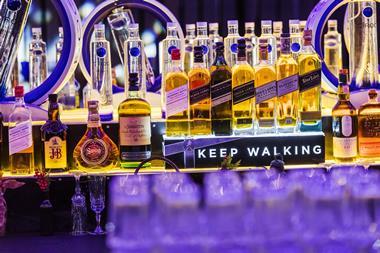

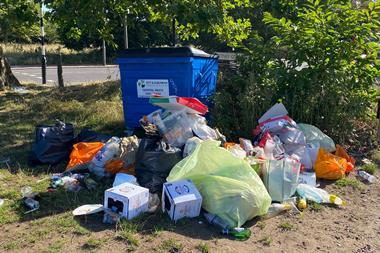
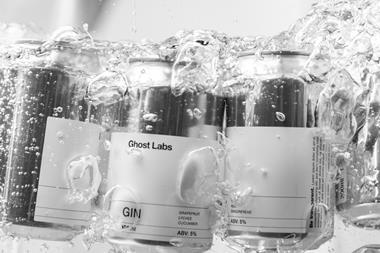
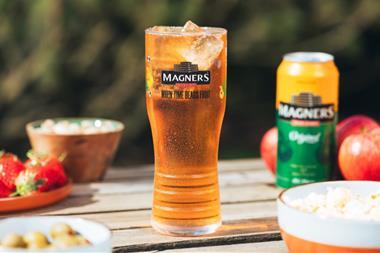
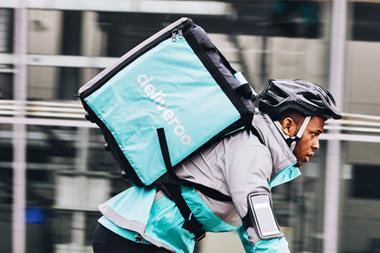




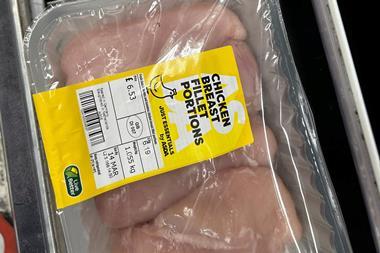
No comments yet